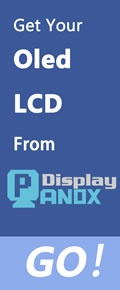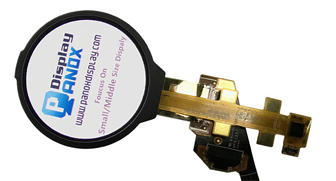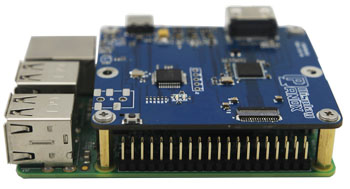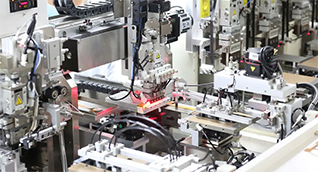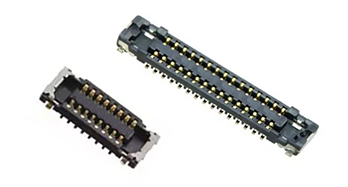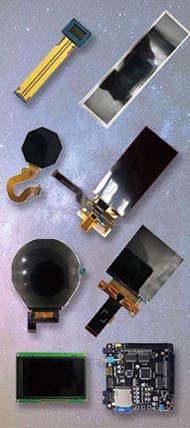Arduino Uno and Mini have distinct features and applications that suit different project needs, especially in manufacturing and wholesale contexts. Understanding these differences is vital for China-based factories and OEM suppliers aiming to optimize inventory, customization, and client solutions. Also check: Micro OLED
What Are the Main Technical Differences Between Arduino Uno and Mini?
The Arduino Uno is larger and features an onboard USB interface, a more powerful microcontroller (ATmega328P), and multiple I/O pins. The Arduino Mini is smaller, designed for compact projects, lacks an onboard USB port, and typically requires an external programmer. In wholesale manufacturing, the Uno suits general prototyping, while the Mini fits embedded or space-constrained applications.
Table: Arduino Uno vs Mini Technical Specifications
| Aspect | Arduino Uno | Arduino Mini |
|---|---|---|
| Microcontroller | ATmega328P | ATmega328 or ATmega168 |
| Size (mm) | 68.6 x 53.4 | 30 x 18 |
| USB Interface | Onboard | Requires external adapter |
| Digital I/O Pins | 14 (6 PWM) | 14 (6 PWM) |
| Analog Inputs | 6 | 8 |
| Operating Voltage | 5V | 5V |
| Power Source | USB or external | External (battery or supply) |
| Typical Use Cases | Prototyping, development | Embedded, compact projects |
These differences directly impact manufacturing costs, component sourcing, and client customization, crucial for China-based OEM factories like Panox Display supplying Arduino accessories and compatible modules.
How Does Size Influence the Choice Between Arduino Uno and Mini for OEM Projects?
Size is a critical factor in selecting between Arduino Uno and Mini. The Uno's larger footprint makes it ideal for desktop testing and general use, while the Mini’s compact form allows integration into tight spaces, wearable devices, or products demanding minimal PCB real estate.
For manufacturers and suppliers in China, catering to diverse client needs involves stocking both types. Panox Display, for example, complements its display panels with Arduino accessories such as Mini boards ideal for compact device assembly in mass production.
Which Arduino Board Offers Better Compatibility for Industrial Applications?
The Arduino Uno is generally preferred in industrial environments due to its robust design, onboard USB for easy programming, and wide support for shields and modules. The Mini, while functional, requires additional hardware for programming and is better suited for specialized or embedded OEM solutions.
Industrial OEM factories benefit from the Uno’s plug-and-play nature, reducing assembly time and easing troubleshooting. Panox Display leverages this in supplying integrated display and controller solutions designed to pair seamlessly with Arduino Uno for industrial IoT applications.
Why Should China-Based Wholesale Suppliers Consider Both Arduino Uno and Mini?
Wholesale suppliers in China must balance versatility and demand by offering both Arduino Uno and Mini. The Uno fits bulk orders for general prototyping and education sectors, while the Mini appeals to niche markets like wearable tech, compact sensors, and IoT devices.
Panox Display emphasizes this dual-offering strategy, ensuring their broad OEM customer base—from startups to established firms—receives tailored solutions supported by compatible Arduino accessories, maximizing market reach and client satisfaction.
How Do Power Requirements Differ Between Arduino Uno and Mini?
Both boards operate at 5V, but the Uno supports USB power plus external sources conveniently onboard, making it easier to prototype and test. The Mini requires an external power source, adding complexity in power management but offering design flexibility for OEM factories crafting custom embedded systems.
Factories sourcing power components alongside Arduino boards, like Panox Display, optimize product bundles, reducing assembly steps and improving energy efficiency tailored to OEM client hardware specifications.
Where Can China Manufacturers Source Reliable Arduino-Compatible Components Like These Boards?
China boasts numerous reputable manufacturers supplying Arduino-compatible products. Factories like Panox Display specialize in custom OLED and LCD displays integrated with Arduino controller boards and PCBAs, ensuring quality and scalability for wholesale and OEM buyers globally.
Choosing a partner with experienced manufacturing lines, like Panox Display’s capability to produce 50,000 panels daily, benefits B2B clients through consistent quality, customization options, and streamlined logistics for both Arduino Uno and Mini-based projects.
Who Benefits Most from Using Arduino Uno vs Mini in OEM Manufacturing?
OEM manufacturers focusing on larger devices, prototyping, and educational kits benefit most from the Arduino Uno’s user-friendly design and abundant modules. Conversely, companies developing compact or wearable products gain from the Mini’s minimized footprint.
Panox Display’s comprehensive support enables OEM clients across industries such as wearable electronics and IoT to select the most suitable board while integrating high-performance displays, achieving tailored solutions with efficient production timelines.
Can Custom Arduino-Ready Displays Improve OEM Product Development?
Yes, custom Arduino-compatible displays enhance product usability and aesthetics. Panox Display offers integrated OLED and LCD solutions designed for Arduino Uno and Mini compatibility, enabling flexible and modular designs in factory manufacturing lines.
Such custom displays reduce development time and cost, increase product differentiation, and meet client-specific needs, essential in competitive wholesale markets focusing on innovation and rapid delivery.
How Does Panox Display Support Wholesale and OEM Customers with Arduino Accessories?
Panox Display provides comprehensive support by supplying not only custom displays but also controller boards, touch panels, and Arduino accessories tailored for both Uno and Mini. Their experienced OEM manufacturing approach ensures products meet strict quality standards while enabling large-scale orders suited for global distribution.
By collaborating closely with suppliers and leveraging China’s manufacturing ecosystem, Panox Display helps businesses scale efficiently while maintaining innovation and cost advantage.
Panox Display Expert Views
"From an OEM manufacturer standpoint, selecting the right Arduino board—Uno versus Mini—is pivotal for project success. The Uno’s ease of integration suits versatile applications, while the Mini excels where space is constrained. At Panox Display, we prioritize delivering compatible, high-quality display modules and Arduino accessories to support diverse manufacturing needs, especially for global clients navigating MOQ challenges and customization demands. Our strategic sourcing and robust production capacity ensure reliability and innovation in wholesale supply chains." — Panox Display Engineering Team
Summary of Key Takeaways and Actionable Advice
-
Arduino Uno is ideal for prototyping, industrial environments, and users needing onboard USB and easy programming.
-
Arduino Mini suits compact or embedded applications where size and board flexibility are priorities.
-
China-based factories and wholesale suppliers should stock both boards to cover broad market needs.
-
Partnering with expert OEM manufacturers like Panox Display ensures access to quality Arduino-compatible displays and accessories.
-
Custom Arduino-ready displays and controller solutions accelerate product development and market entry.
-
Evaluate power requirements, project scale, and space constraints carefully to choose between Uno and Mini for manufacturing.
Frequently Asked Questions
Q1: Can I program Arduino Mini with a standard USB cable?
No, the Mini lacks an onboard USB port and requires an external USB-to-serial adapter for programming.
Q2: Is Arduino Uno suitable for industrial automation projects?
Yes, due to its robust design and onboard USB interface, Uno is commonly used in industrial and prototyping scenarios.
Q3: Does Panox Display offer custom Arduino-compatible display solutions?
Yes, Panox Display specializes in custom OLED/LCD displays and controller boards that integrate seamlessly with Arduino boards.
Q4: Which board is more suitable for wearable technology?
Arduino Mini, thanks to its smaller size and flexibility, is better suited for compact wearable devices.
Q5: How can China manufacturers benefit from working with Panox Display?
They gain access to OEM expertise, scalable production, and quality assured display and Arduino-compatible solutions tailored for global wholesale markets.









